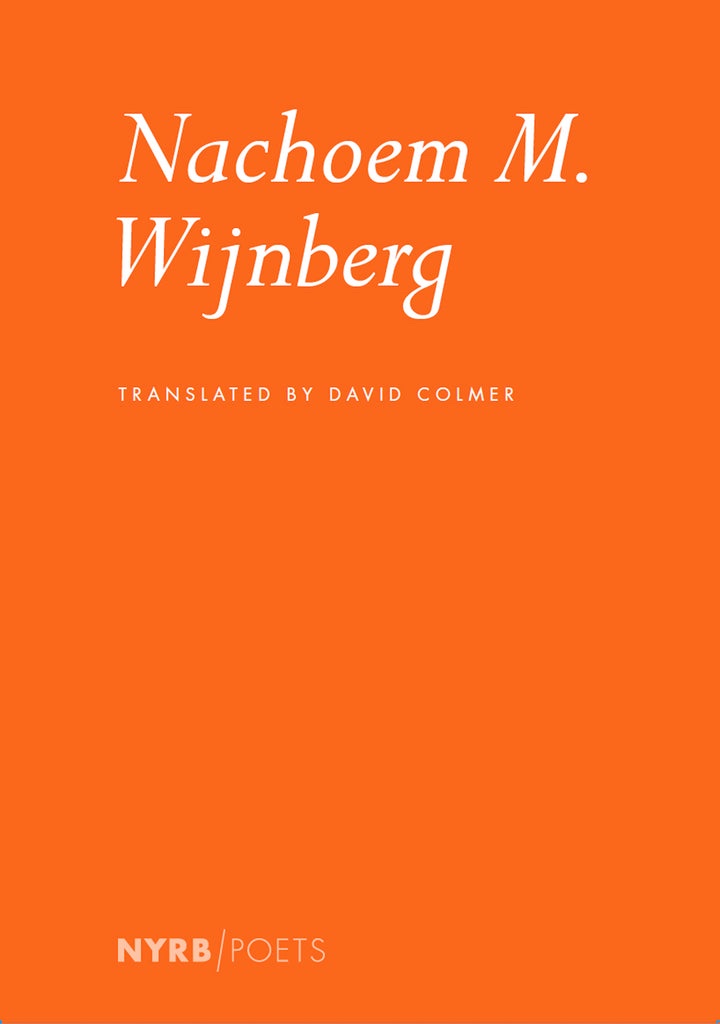Nachoem M. Wijnberg, translated from the Dutch by David Colmer (New York Review Books, 2022)
In J. M. Coetzee’s novel Youth, published exactly two decades ago, we meet a young South African who has come to London in the late 1960s to establish himself as a poet. He takes on various uninspiring jobs to make ends meet and spends the evenings and weekends in the British Library reading poetry. As a native Afrikaans speaker, he also discovers some poets from Holland. “Dutch poetry has always struck him as rather boring,” Coetzee writes about the protagonist, a nameless character who arrives at the conclusion that Dutch literature has nothing to offer. “His worst conviction is confirmed: that of all the nations the Dutch are the dullest, the most antipoetic.”
On a superficial level, Coetzee’s protagonist makes a defensible claim. There is often very little poetry in Dutch poetry, a reality stemming from a post-Calvinist convention valuing ordinariness over ambition and anecdotal commentary over the fictional imagination. But in opposition to this dominant current of sameness, Dutch literature also offers a wide range of outstanding poets who perceive their art as a profound literary adventure. While many Dutch poets continue to bear the torch of mediocrity, some of Holland’s most wilful and wayward poets can, at the same time, be ranked among the best and most compelling in the world. By courtesy of the Dutch Foundation of Literature and the work of diligent translators, this exciting body of literature is increasingly available to the international reader.
Too big to fit
Nachoem M. Wijnberg is a case in point. If you are looking for a single book to refute Coetzee’s unflattering observation, the recently published collection Nachoem M. Wijnberg (New York Review Books, 2022) would be a wonderful place to start. In a remarkably lucid and refined translation by David Colmer, this collection brings together a generous selection of poems from Wijnberg’s twenty volumes of poetry published to date.
In the Netherlands, Wijnberg is often considered a “difficult” poet, which is a lazy way to say that he is unconventional and that his poems are highly unusual. Like all the best poetry, a Wijnberg poem undermines our perception of what poetry is and what a poem ought to look like. There is no rhyme or metre, the words and sentences do not sing or dance and there is virtually no deployment of metaphor. In the absence of all the usual stuff that poems are made of, we need to explore what the characterising ingredients are of a typical Wijnberg poem.
Poem
Writing a poem
that is too big to fitbetween what I now see and what I see
when I am quiet.Saying how this is,
without saying what this is.Trying with a poem.
If I can’t make it any bigger, it’s done.
Longer and wider
This short poem from the 2004 collection Eerst dit dan dat (First this, then that) is not just called “Poem” because it is indeed a poem, but because it captures in a handful of simple phrases what Wijnberg wants his poetry to achieve. Over the years, the poet has explained in various interviews that he sees his poems as a device to create a particular kind of knowledge. His poetry is a vehicle to increase our understanding of human thought and behaviour. Trying, with a poem, to say how it is, without explicitly saying what it is. When he cannot make it any bigger, the poem is finished. Wijnberg’s poems are written in clear and transparent language, yet conjure up a complex set of ideas and realities. This allows the reader to consider multiple potential meanings of a poem; approximating but never fully arriving at a conclusive interpretation.
This collection offers a broad introduction for the reader new to Wijnberg’s poetry. For the reader already familiar with his oeuvre, this particular selection provides a concise demonstration of his impressive versatility and ongoing experimentation. As a first observation, we see the poems growing longer and wider – as if the poet discovers, over time, that he needs more words to say less, and writes longer sentences in his pursuit of the things that do not yet exist.
Mountain
The final seven poems are taken from Wijnberg’s most recent volume Namen noemen (naming names). They deal with the literary imagination and the craft of poetry. Combining artistic confession and quasi-fictional narrative, we meet poets such as Joseph Brodsky and Constantine Cavafy, Hans Faverey and Herman Gorter. In a poem called “What Poetry’s Good for”, Wijnberg writes:
If asked what poetry’s good for,
I always make it slightly bigger than defensible,
that’s the agreement among poets who understand
their trade a little.
In the same poem the narrative voice says about Brodsky that he, “tried to be two or three poets”, and wonders: Why so few? Wijnberg postulates that more is more; he is the mannequin who wears all of his clothes at the same time. Perhaps this is what can make his poetry come across as difficult, despite the seeming simplicity of the language. Wijnberg liberates his, and our thoughts from the constraints of logic and linear argumentation. This makes reading Wijnberg a true adventure; as long as one is willing to resist the desire to fully understand what his poems are about.
Nachoem Wijnberg is a free-standing mountain in the sloping hills of Dutch poetry; a relentless innovator who has created a gorgeous oeuvre. Am I making him bigger than defensible? You can find out for yourself. David Colmer has translated more than one hundred and seventy poems. It is an irresistibly enticing collection to read, read again and cherish.
Nachoem M. Wijnberg,,translated from the Dutch by David Colmer. New York Review Books, 2022. Order from the publisher.
Evi Aarens (London, 2000) is a Dutch-language poet, occasional critic and the author of Disoriëntaties (Cossee, 2021).

Laat een reactie achter